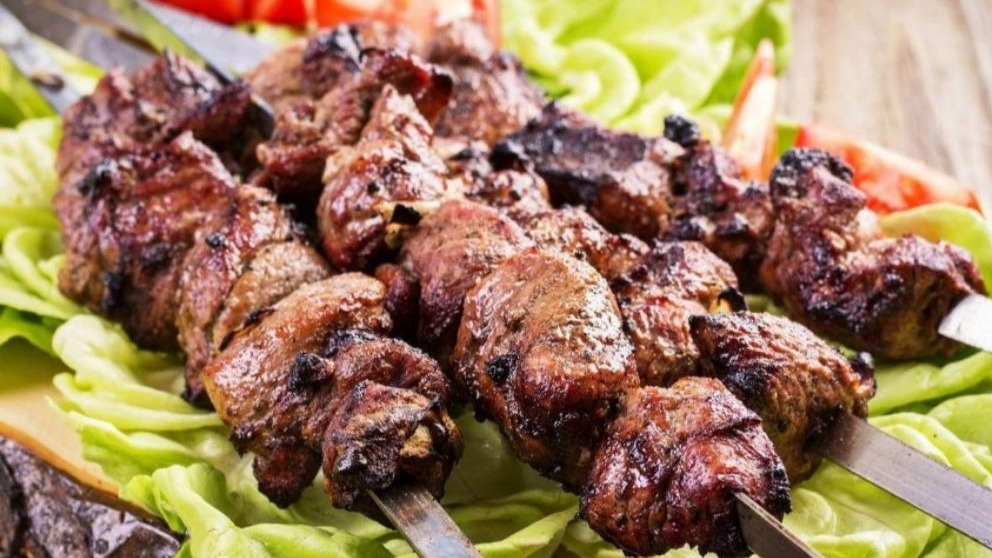Interesting points of Iranian cooking and its changes throughout history
Najaf Daryabandari in the book "Mostatab Cookery" enumerates the general features of Iranian cooking, which are:
Usually, the main dishes are cooked in the same way; In fact, these feeds can be considered as models and more diverse feeds can be made from it. This depends on the combination of ingredients with each other and the creativity and innovation of the cook; Iranian food is mild and balanced, and aromatic ingredients and spicy seasonings, different spices and colors are less often used in it; It was charcoal or flat four-legged; Therefore, the gentle and uniform heat of the oven and the oven caused all kinds of Iranian main foods such as challah, pilaf, stew and broth to be eaten after the so-called steeping and hardening and finding a special flavor; It is an Iranian cooking school. Since vegetables, turnips, and beans are more available than meat, chicken, and fish, Iranian cooks have added them to rice and cooked pilafs that do not need to be stewed.

Sassanid Period: There are dishes and findings left from previous periods and researchers have made guesses, but detailed information about their food and eating habits has not been mentioned. For this reason, we will start with the Sassanid period. It is said in historical reports that during war and famine, Sassanid kings ordered cooks to prepare simple meals and spread simple tables. For example, among the foods mentioned for these periods, there was bread, salt, vinegar, vegetables, and pickles for the king. In addition, it is interesting to know that during the Sassanid era, Iranians had special eating habits that made even in the Islamic era to Pay attention to these customs. By reviewing these cases, you will probably remember some of the principles that are considered as the eating habits of developed societies today. While Iranians have been trying to adhere to these principles since thousands of years ago. These include:
Prayer at the table
Silence while eating
Avoiding overeating; Even a gluttonous person was punished by the king in such a way that he was separated from the class of nobles and nobles and was placed next to jokers for humiliation. Eating
Not reaching out to pick up food far away
Taking small bites
Eating slowly
Not wiping dirty hands with clothes
Not taking a bite with a knife and etiquettes of giving up food

Seljuqian, Ilkhanian and Gurkanian period: In different periods, different tribes came to Iran and settled there. In addition to being influenced by Iranians, these ethnic groups who came with their different cultures also left an impact. The Turks were among the nomadic tribes whose main food consisted of hunting meat and the milk of horses, camels, goats and sheep, and car plants. Among the monuments they left in the culinary culture of Iran, for example, the Turkish word qorut means curd and qorqorut The meaning of black curd is instead of Persian tarf which is still used and its use is to make soups and soups tastier. Also, the use of different types of rice along with foods and the preparation of chelo and plu in its modern form or the preparation of Turkish food called York or Baghra, which existed in the culinary culture of Iran until the 8th lunar century and has been removed from Iranian cuisine today, is a sign of the influence of cooking. Middle Asian peoples are based on Iranian cuisine of the Mongol and Timurid periods.

Safavid period: It is said that Safavid cooking was luxurious. For example, in the parties of the Safavid kings, large and rich tables were spread for eating, and all kinds of colorful sour and sweet pilafs, all kinds of roast lamb, sheep, deer, birds and fish, fresh and dry fruits, nuts, sweets and sherbet in golden dishes, crystal And they set china on the table. The food of the Safavid kings was placed in large plates with golden covers. Foods were usually placed in front of the guests in special gatherings and there was no mention of cutlery and plates. In that period, it was customary to eat food with hands, and sometimes they put a thin lavash bread next to the rice and used it as a napkin. In the court of the kings, Toshmalbashi was placed in front of everyone as a food distributor and kitchen supervisor and supervised the work of setting the table and decorating it. , they served milk, cheese and fruit, but at night they ate dinner separately. Rice, ice cream, biryani and chicken and meat were the dinner of many people.
Qajar period: According to historians and tourists, the Qajar period was an immeasurable luxury in consuming different foods. But it has been said that Agha Mohammad Khan Qajar (the founder of the Qajar dynasty) was one of the kings who cared a lot about his food and avoided eating it. He always weighed his food so as not to overeat. Sir John Malkam reported that Agha Mohammad Khan usually used to eat the same bread and buttermilk that was the common food of the Sepahs. But the later kings were interested in luxury and colorful tables. Among the common people in the Qajar period, it was common to eat all kinds of meat dishes, pilaf, stews, syrups, jams, sweets and fruits. Eating with hands was still popular, and after eating, they drank coffee in some areas. Sometimes Iranian hosts would make fat hookahs for their guests and put them on the table.

